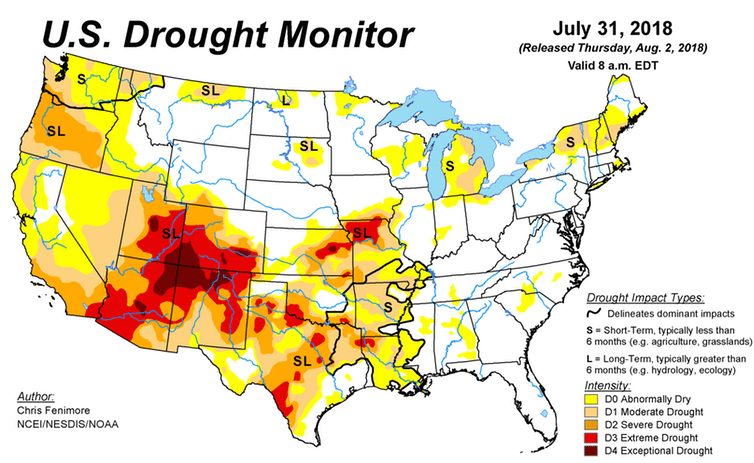Every summer the U.S. Central Plains go dry, leading farmers to tap into groundwater to irrigate sorghum, soy, cotton, wheat and corn and maintain large herds of cattle and hogs. As the heat rises, anxious irrigators gather to discuss whether and how they should adopt more stringent conservation measures.
They know that if they do not conserve, the Ogallala Aquifer, the source of their prosperity, will go dry.
The Ogallala, also known as the High Plains Aquifer, is one of the largest underground freshwater sources in the world. It underlies an estimated 174,000 square miles of the Central Plains and holds as much water as Lake Huron. It irrigates portions of eight states, from Wyoming, South Dakota and Nebraska in the north to Colorado, Kansas, Oklahoma, New Mexico and Texas in the south.
But the current drought plaguing the region is unusually strong and persistent, driving farmers to rely more on the aquifer and sharpening the debate over its future. A current assessment by the U.S. Drought Monitor, published by the University of Nebraska-Lincoln, the United States Department of Agriculture and the National Oceanic and Atmospheric Administration, shows large swaths of the southern plains experiencing drought ranging […]
Full article: Farmers are drawing groundwater from the giant Ogallala Aquifer faster than nature replaces it
More about the Ogallala Aquifer and aquifer ecology:
New Estimate Finds Less Fresh Groundwater in U.S. Than Previously Assumed
Paper presents changes in Ogallala Aquifer groundwater quality
Scientists on Causes of High Radium Levels in Key Midwestern Aquifer
Idaho on pace to set aquifer recharge record during 2017–18 season
Controversial groundwater withdrawal sparks question of who owns South Carolina water


